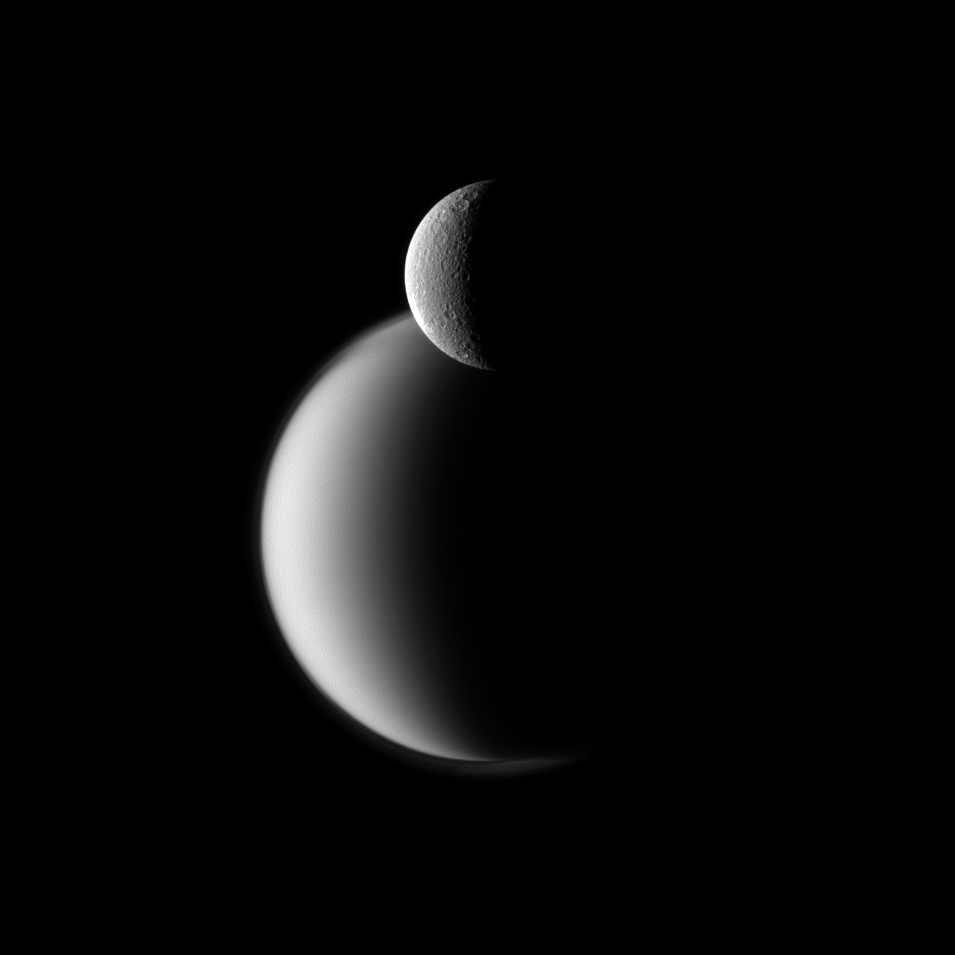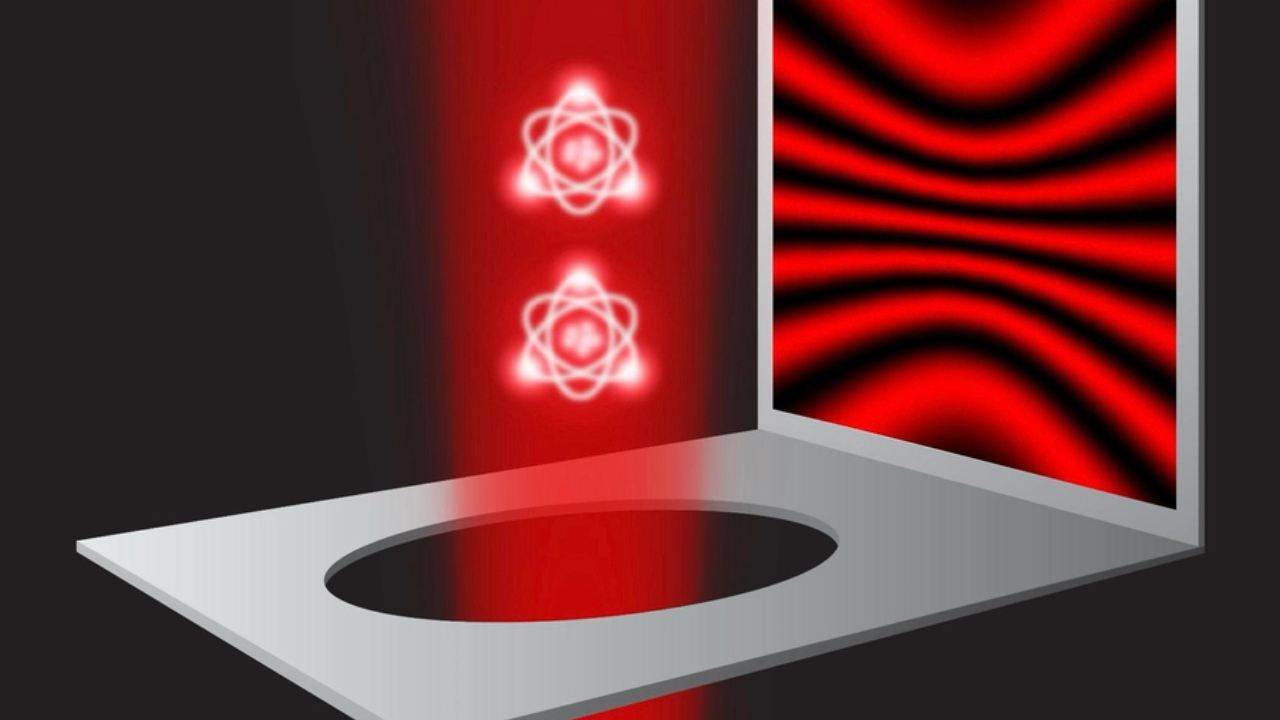Saturn's Two Largest Moons Line Up in New Photo

Saturn's two biggest moons hang together in a stunning new photo from NASA's Cassini spacecraft.
The image shows the heavily cratered Rhea in the foreground, while the hazy orb of the huge moon Titan looms in the distance. Cassini snapped the new Saturn moon photo in visible green light on Dec. 10, 2011, and it was released to the public on Monday (Feb. 13).
Cassini was about 808,000 miles (1.3 million kilometers) from Rhea and 1.2 million miles (2 million km) from Titan when it took the picture, researchers said.
Titan is the largest of Saturn's many satellites; at 3,200 miles (5,150 km) in diameter, it's nearly 50 percent wider than Earth's moon. The only moon in our solar system larger than Titan is Ganymede, which orbits Jupiter.
Titan has a thick, nitrogen-rich atmosphere that shrouds the frigid body in a soupy brown shroud. Complex organic molecules — the carbon-containing building blocks of life as we know it — swirl about in this atmosphere.
The huge moon also has a hydrocarbon-based weather system, with methane rain falling from the sky and pooling in liquid-methane lakes. Astrobiologists speculate that Titan may be one of the best places in the solar system to search for life beyond Earth.
Rhea is Saturn's second-largest moon, but it's a shrimp compared to Titan, measuring just 949 miles (1528 km) across. As the new photo shows, Rhea's icy surface is battered and pocked with many craters.
Breaking space news, the latest updates on rocket launches, skywatching events and more!
Like Titan, Rhea has an atmosphere. But Rhea's is very different; it's much wispier and composed primarily of oxygen and carbon dioxide.
Researchers think the oxygen comes from Rhea's surface ice, liberated from water molecules that get blasted apart by charged particles streaming from Saturn's magnetosphere. The source of the carbon dioxide, however, is more mysterious.
Cassini launched in 1997 and arrived at Saturn in 2004. It has been studying the ringed planet and its many moons ever since, and will continue to do so for years to come. Last year, NASA extended the probe's mission to at least 2017.
Follow SPACE.com for the latest in space science and exploration news on Twitter @Spacedotcom and on Facebook.
Join our Space Forums to keep talking space on the latest missions, night sky and more! And if you have a news tip, correction or comment, let us know at: community@space.com.

Space.com is the premier source of space exploration, innovation and astronomy news, chronicling (and celebrating) humanity's ongoing expansion across the final frontier. Originally founded in 1999, Space.com is, and always has been, the passion of writers and editors who are space fans and also trained journalists. Our current news team consists of Editor-in-Chief Tariq Malik; Editor Hanneke Weitering, Senior Space Writer Mike Wall; Senior Writer Meghan Bartels; Senior Writer Chelsea Gohd, Senior Writer Tereza Pultarova and Staff Writer Alexander Cox, focusing on e-commerce. Senior Producer Steve Spaleta oversees our space videos, with Diana Whitcroft as our Social Media Editor.
